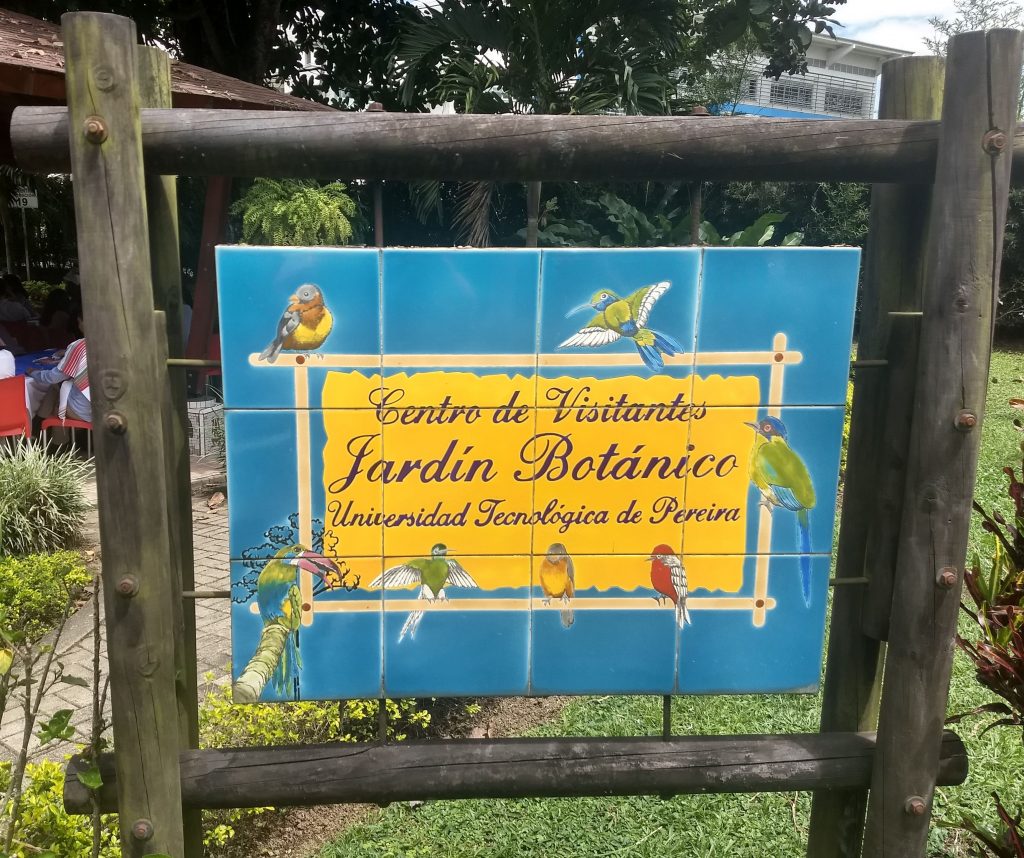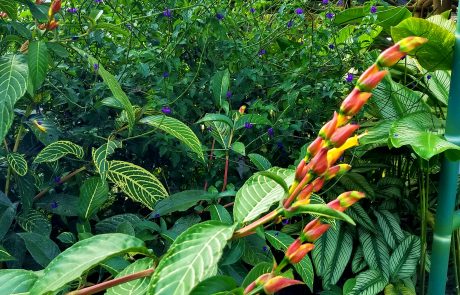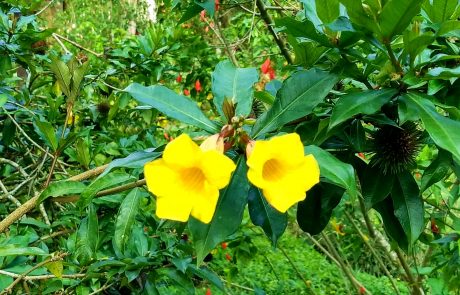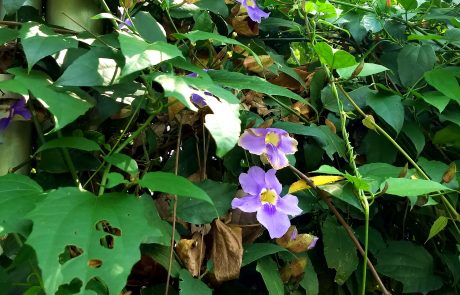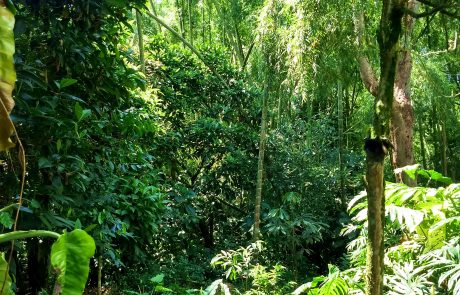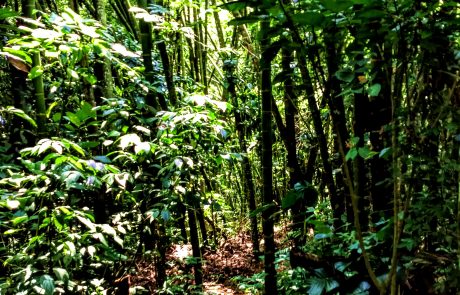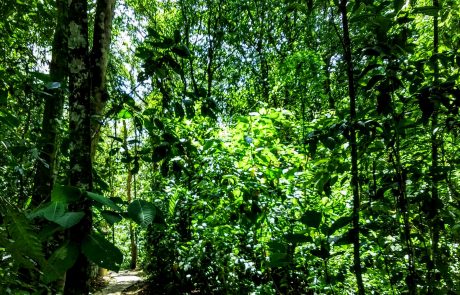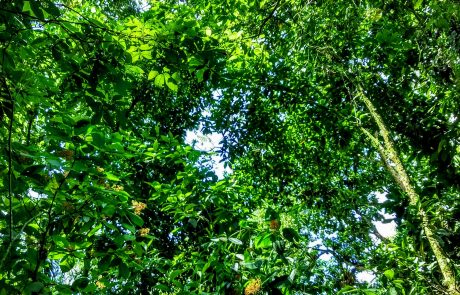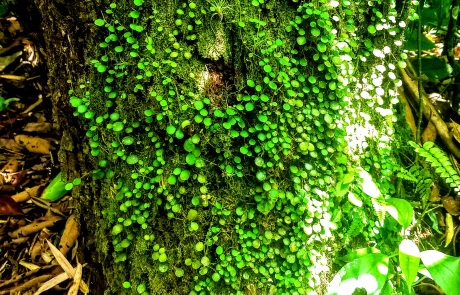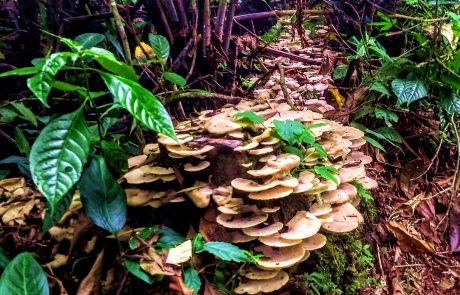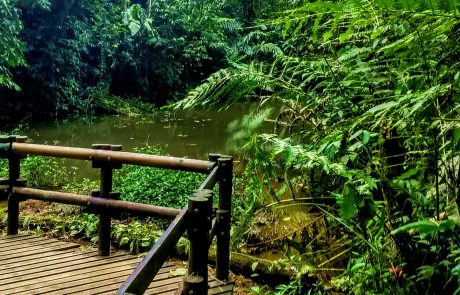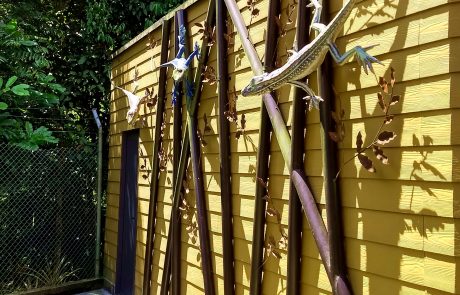July 2019
 If you’re a city in the second most biodiverse country in the world after Brazil, having a botanical garden is kind of a duuh moment. You just gotta do it. Fortunately nature in its luxuriousness here makes putting one together a cinch. You fence off a piece of native forest, stick some cuttings in the ground and BINGO! You’ve got yourself a botanical garden.
If you’re a city in the second most biodiverse country in the world after Brazil, having a botanical garden is kind of a duuh moment. You just gotta do it. Fortunately nature in its luxuriousness here makes putting one together a cinch. You fence off a piece of native forest, stick some cuttings in the ground and BINGO! You’ve got yourself a botanical garden.
The one in Pereira is part of the Technological University of Pereira (Universidad Tecnológica de Pereira = UTP), which I found out to my great surprise is the only public university in Pereira, a city of some 500,000 people. I’d expect a fistful of public universities in such a city. No such luck. It’s hard to get in and fiercely competitive.
UTP does itself proud with a full-fledged botanical garden geared heavily toward didactic ends. Student guides take around small groups and do quite a bit of explaining. The group I was in had about 8 people in it, including three children. I was astonished to find the guide intent on explaining what seemed the entire natural history of the Planet in what I (wrongly) assumed would be a leisurely amble through the grounds. After the first lecture I knew I was in for hours of jabber and very little looking at plants. I’ve read enough to know that plants use carbon dioxide and emit oxygen. I’ve also heard through the grapevine that conservation is important for all sorts of reasons. So after three lectures I ditched the group and sallied forth on my own so I could listen to the forest instead of to the guide talking a mile a minute. I went to see the plants, after all, not to get a free semester’s worth of Science 101. Call me a curmudgeon if you will but that’s my story and I’m sticking to it.
Here’s a schematic of the garden:

The full circuit makes for quite a hike because as always in the Coffee Triangle there’s a lot of ups and downs. But my budding buns of steel were well up to the job and ended the full circuit with oomph to spare. Woohoo. Let’s hear it for Gray Power. I’m going to go heavy on the pics and skimpy on the botanical commentary in this post — any regular readers of my posts on things horticultural will doubtless roll their eyes back at that promise, since I’ve never made it before 🙂 — so fasten that visual seatbelt. You’re in for a ride.
Things start off with a rather battered-looking orchidarium that only had three specimens in bloom when I visited. One that was blooming was so stunning, however, that I didn’t feel shortchanged by the experience. Here it is in all its glory:
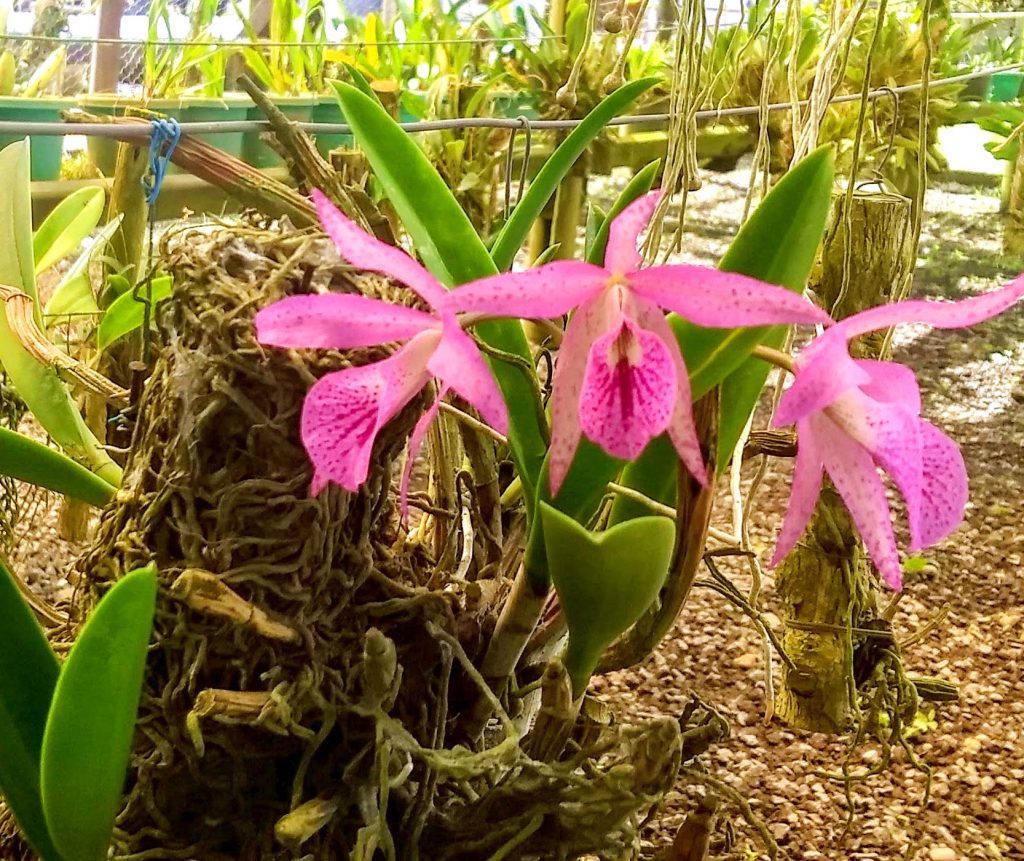
I don’t even know what to call that color but it doesn’t matter. When the image enters your eyeballs it’s like getting an electric charge. I’ve never seen anything like it before. By the way, Colombia is Number One in the world for both orchids and palms. I’m sure there are many more stunners like this one waiting to be discovered.
The tour continues with a lengthy discourse on hummingbirds. They’re jaunty little creatures, to be sure, but they’re not plants. I went for plants, a reasonable expectation when one visits a botanical garden, I think. So twenty minutes of yakking about hummingbirds made me tap my toes on the concrete walkway wondering when we’d get to the good stuff. Before you enter the forest part of the garden with the circuit pathway there’s another twenty-minute lecture to withstand about botanical gardens and their importance for conservation. At long last you get into the forest area but wait — there’s another twenty minute lecture on the collection of plants in the Araceae (arum) family — philodendrons, pothos, spathyphyllum, things we’re used to seeing as houseplants in the States. FINALLY you start moving along the circuit pathway until you come after brief motion forward to yet another Science 101 display sign and it’s time to discuss at length the evolutionary history of the plant kingdom. Yeehaw.
All of this was delivered in Spanish spoken so quickly it made a Puerto Rican seem slow of tongue. At the point paleobotany kicked in my patience ran out. I left the group and started walking the circuit with the friend who had come with me. I wanted to experience the forest and the guide was stealing its thunder in a way that made me yearn to say, “Dear heart, there’s about 1 km of pathway to cover, so can you just stifle yourself, pretty please?” But I kept my mouth shut (because my momma raised me right) and took off to encounter the forest on its own terms without scientific commentary. Thus ended my qvetching, as well, you’ll be happy to hear. These foreigners, such a pain …
So let’s get to the pics and leave the guide behind droning on about carbon cycles and whatnot. I can Google it if I need to catch something I missed. Ready? Right, then let’s hit the trail.
Moving from the orchidarium to the forest pathway takes you through some lovely ornamental plantings. Here are some pics of my favorites:
I’m not in Kansas anymore so the gaps in my botanical knowledge show as wide as the Grand Canyon. Apologies to our lovely plant friends, they deserve far better. I believe the yellow flowers are Tecoma stans, but don’t quote me on that. The gorgeous tubular flower that looks like it dropped from a Tabebuia tree is also beyond my ken. They’re all lovely and I wish I knew more about them. I’ll keep working on it and add information as I discover it.
The trees in the ornamental area are spectacular. I did take shots of the botanical names, but instead of getting all technical on you I’m going the aesthetic route and present them as a collage entitled, “Symphony In Green”:
The native forest type here is quite different from what I expected. What little botanical information I found and digested before my arrival didn’t include any detailed description of forest habitats in the Coffee Triangle. The biggest surprise to me is the presence of a major bamboo species — Guadua angustifolia, known locally as guadua, just like the genus name and pronounced something like “wadthwah.” It sounds like you’re trying to speak Danish after a few too many rounds of straight-up Jack Daniels. It grows very tall, as tall as some of the canopy species, and has for centuries been an important structural material for building. It’s not a tidy creature, if the truth be told, and goes every which-a-way in its thick stands, looking sometimes like Chinese yarrow sticks after they’ve been tossed for a divination. The other major tree species are unfamiliar to me but I recognize the family names, sometime with raised eyebrows because I never expected to find them here — Fabaceae (bean family), Lauraceae, Podocarpaceae (podocarps, big in SE Asia), Sapindaceae (soapwort family), and Myrtaceae (myrtle family). Here are some pics:
The red stunner is a Heliconia, which are a dime a dozen in Colombia. There are many species native to the country and I’m at pains to name this one, but you get the idea. They’re lovely and used extensively as ornamentals. Another species of Heliconia with a completely different inflorescence is found on the forest floor level and apparently was used for lotion by the Quimbaya people, the indigenous group native to the area when the Spanish arrived. It’s in the ginger family (Zingiberaceae) so it’s very aromatic. To my eye it looks rather like a kitchen utensil:
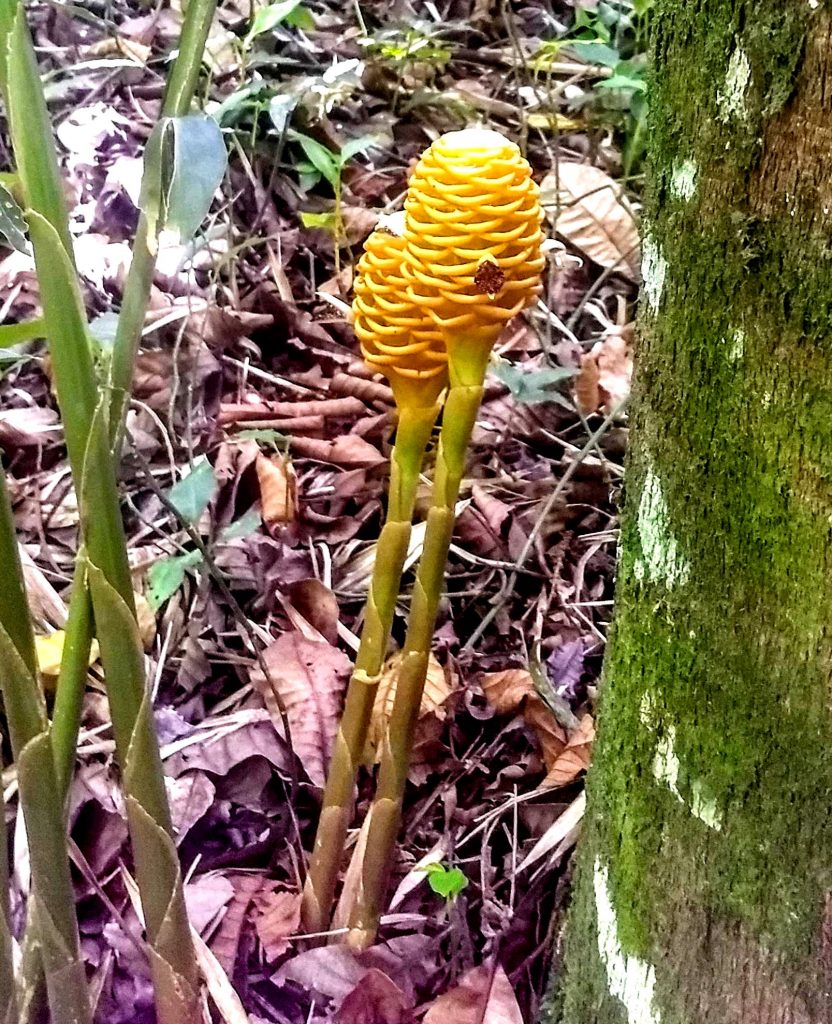
When you walk through a forest there are inevitably eye-catching patches of ferns and moss and whatnot, and this walk was no exception. Here are a few pics of my favorite details, together with a shot of the pond at the far end of the circuit path that sported lovely little turtles sunning themselves on the sand spits near the shore:
Although the trip was all about enjoying the wonders of Nature, things from the hand of man must also receive their due. There are two things I found very handsome and amusing. The first is a sculpture mural at the Visitor’s Center in the Botanical Garden where somebody with a keen sense of irony and a taste for setting people’s teeth on edge has done wonderful things in metal with lizards. People here are so used to seeing them it barely registers, but for us Yanks seeing anything of the sort usually elicits a loud EEEEEK. The second item is near the entrance of UTP. When I crossed the footbridge from the Botanical Garden to the campus and caught sight of it I stopped dead in my tracks. I don’t know who did it or how long it’s been there, but the simple fact that it’s there speaks for itself. It also speaks volumes without my doing anything by way of commentary, so take it away, kids:
If you get to Pereira you should definitely put the Botanical Garden on your to-do list. The entrance fee is a paltry COP6,000 (about $1.75) and you can wander around for hours if you like. They’ll set you up with a guide, of course, but you can bolt and take off on your own if you prefer — and if you don’t speak Spanish you’re off the hook from the get-go because nobody speaks English. So give it a look-see, you’ll be very glad you did. I’m definitely going back for seconds.
